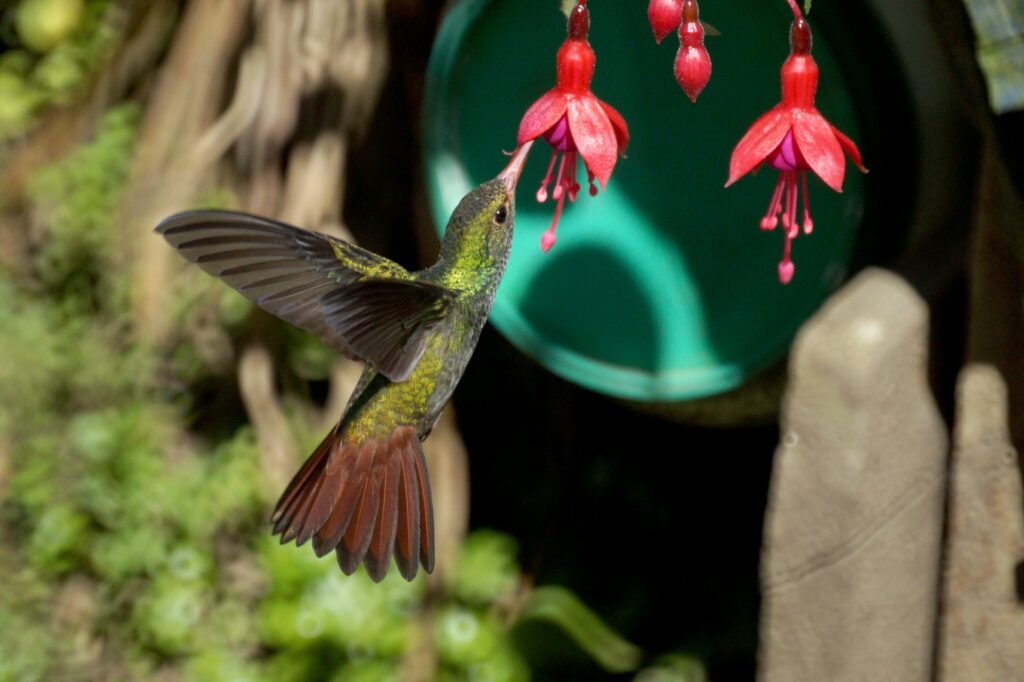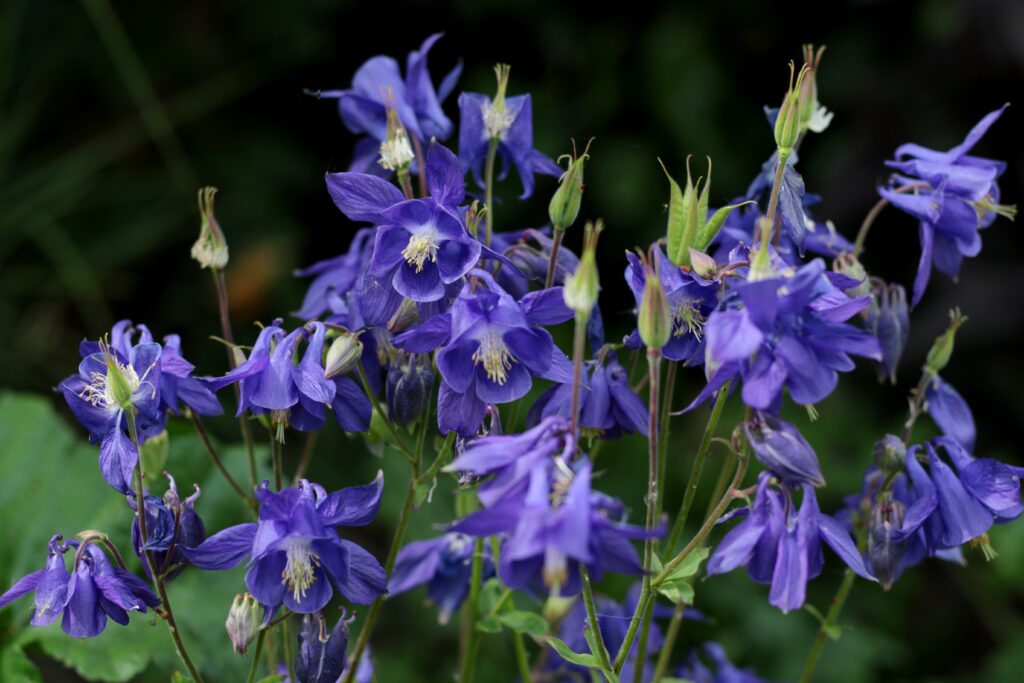Hummingbirds are enchanting creatures, renowned for their iridescent plumage, hovering flight, and insatiable appetite for nectar. Creating a garden that attracts these tiny jewels of the sky is a delightful endeavor that not only brings joy to the observer but also plays a vital role in pollination. Planting flowers that hummingbirds love is the key to drawing them into your garden, providing them with a vital food source while adding vibrant colors and scents to your outdoor space. In this comprehensive guide, we’ll explore 15 exquisite flowers that are sure to captivate hummingbirds and transform your garden into a haven for these delightful creatures.
Salvia (Salvia spp.):
Salvia, also known as sage, is a favorite among hummingbirds due to its tubular flowers that are rich in nectar. With a wide range of species and cultivars available, you can choose from an array of colors, including vibrant reds, purples, and blues. Plant salvia in well-drained soil and ensure it receives plenty of sunlight to encourage prolific blooming throughout the growing season.

Bee Balm (Monarda spp.):
Bee balm, also called bergamot or Oswego tea, produces clusters of colorful flowers that are irresistible to hummingbirds. The tubular shape of its blooms makes it easy for hummingbirds to access the nectar hidden within. Bee balm is a hardy perennial that thrives in full sun to partial shade and moist, well-drained soil.

Trumpet Vine (Campsis radicans):
As its name suggests, trumpet vine produces trumpet-shaped flowers that hummingbirds find irresistible. This vigorous vine is perfect for arbors, fences, or trellises, providing ample opportunities for hummingbirds to feed. Trumpet vine prefers full sun and well-drained soil, and it can tolerate a wide range of growing conditions.

Cardinal Flower (Lobelia cardinalis):
Named for its brilliant red flowers, the cardinal flower is a magnet for hummingbirds. Its tubular blooms are filled with sweet nectar, attracting these tiny birds from afar. Cardinal flower thrives in moist, acidic soil and partial shade, making it an ideal choice for bog gardens or woodland areas.

Fuchsia (Fuchsia spp.):
Fuchsia is renowned for its elegant, pendulous flowers that come in a variety of colors, including shades of pink, purple, and red. Hummingbirds are particularly fond of the nectar-rich blooms, which hang delicately from the plant’s arching stems. Grow fuchsia in partial shade and keep the soil consistently moist for best results.

Columbine (Aquilegia spp.):
Columbine’s unique, spurred flowers make it a standout in any garden, attracting not only hummingbirds but also bees and butterflies. This hardy perennial comes in a range of colors, from soft pastels to vibrant hues, providing ample choices for gardeners. Columbine prefers partial shade and well-drained soil with regular watering.

Penstemon (Penstemon spp.):
Penstemon, also known as beardtongue, boasts tall spikes of tubular flowers that are perfect for hummingbirds to feed from. With a wide range of species and cultivars available, you can find penstemon varieties to suit any garden style or color scheme. Plant penstemon in full sun and well-drained soil for best results.

Lantana (Lantana spp.):
Lantana is prized for its prolific blooms and long-lasting flowers, which come in a kaleidoscope of colors. Its nectar-rich blossoms are a favorite of hummingbirds, bees, and butterflies alike. Lantana thrives in full sun and well-drained soil, making it a perfect choice for sunny borders or containers.
Sage (Salvia spp.):
Sage, with its aromatic foliage and colorful flowers, is a welcome addition to any garden. Hummingbirds are drawn to the tubular blooms of many sage species, including culinary varieties like common sage (Salvia officinalis) and ornamental cultivars like ‘Hot Lips’ and ‘Black and Blue’. Plant sage in full sun and well-drained soil for best results.

Agastache (Agastache spp.):
Agastache, also known as hyssop or hummingbird mint, produces spikes of tubular flowers that are irresistible to hummingbirds. This drought-tolerant perennial comes in a variety of colors, from soft pinks to vibrant oranges, adding a splash of color to the garden. Plant agastache in full sun and well-drained soil for best results.

Coral Bells (Heuchera spp.):
Coral bells are prized for their colorful foliage and delicate, bell-shaped flowers, which hummingbirds find irresistible. With a wide range of cultivars available, you can choose from an array of foliage colors, including shades of green, purple, and bronze. Plant coral bells in partial shade and well-drained soil for best results.
Zinnia (Zinnia spp.):
Zinnias are beloved for their cheerful, daisy-like flowers and long-lasting blooms, which come in a wide range of colors and sizes. Hummingbirds are attracted to the nectar-rich blossoms, which provide an abundant food source throughout the summer months. Plant zinnias in full sun and well-drained soil for best results.

Butterfly Bush (Buddleja spp.):
Butterfly bush, as its name suggests, is a magnet for butterflies, but hummingbirds are also drawn to its fragrant, nectar-rich flowers. This fast-growing shrub comes in a variety of colors, from shades of purple and pink to white and yellow, providing ample choices for gardeners. Plant butterfly bush in full sun and well-drained soil for best results.

Red Hot Poker (Kniphofia spp.):
Red hot poker, also known as torch lily, produces tall spikes of tubular flowers that are a favorite of hummingbirds. The vibrant colors of its blooms, which range from fiery reds to sunny yellows, make it a standout in any garden. Plant red hot poker in full sun and well-drained soil for best results.

Creating a garden that attracts hummingbirds is a rewarding endeavor that not only brings beauty and vibrancy to your outdoor space but also plays a crucial role in supporting these fascinating creatures. By incorporating a diverse selection of flowers that provide ample nectar sources, you can transform your garden into a haven for hummingbirds, providing them with the sustenance they need to thrive. Whether you prefer delicate perennials, showy annuals, or fragrant shrubs, there’s a wide range of plants to choose from that are sure to captivate hummingbirds and enchant gardeners alike. So roll up your sleeves, dig in the dirt, and watch as your garden comes alive with the fluttering wings and vibrant colors of these tiny jewels of the sky.
